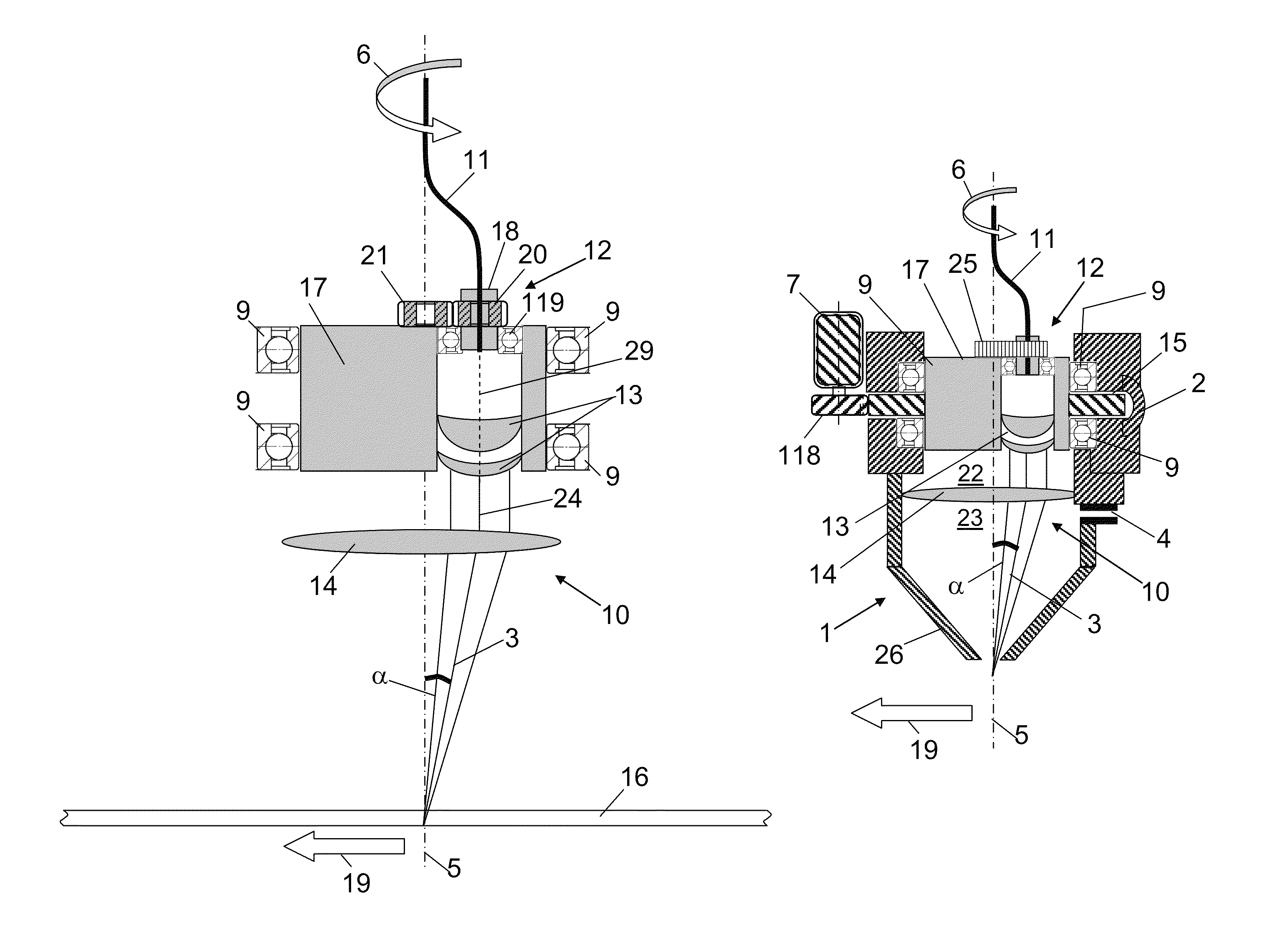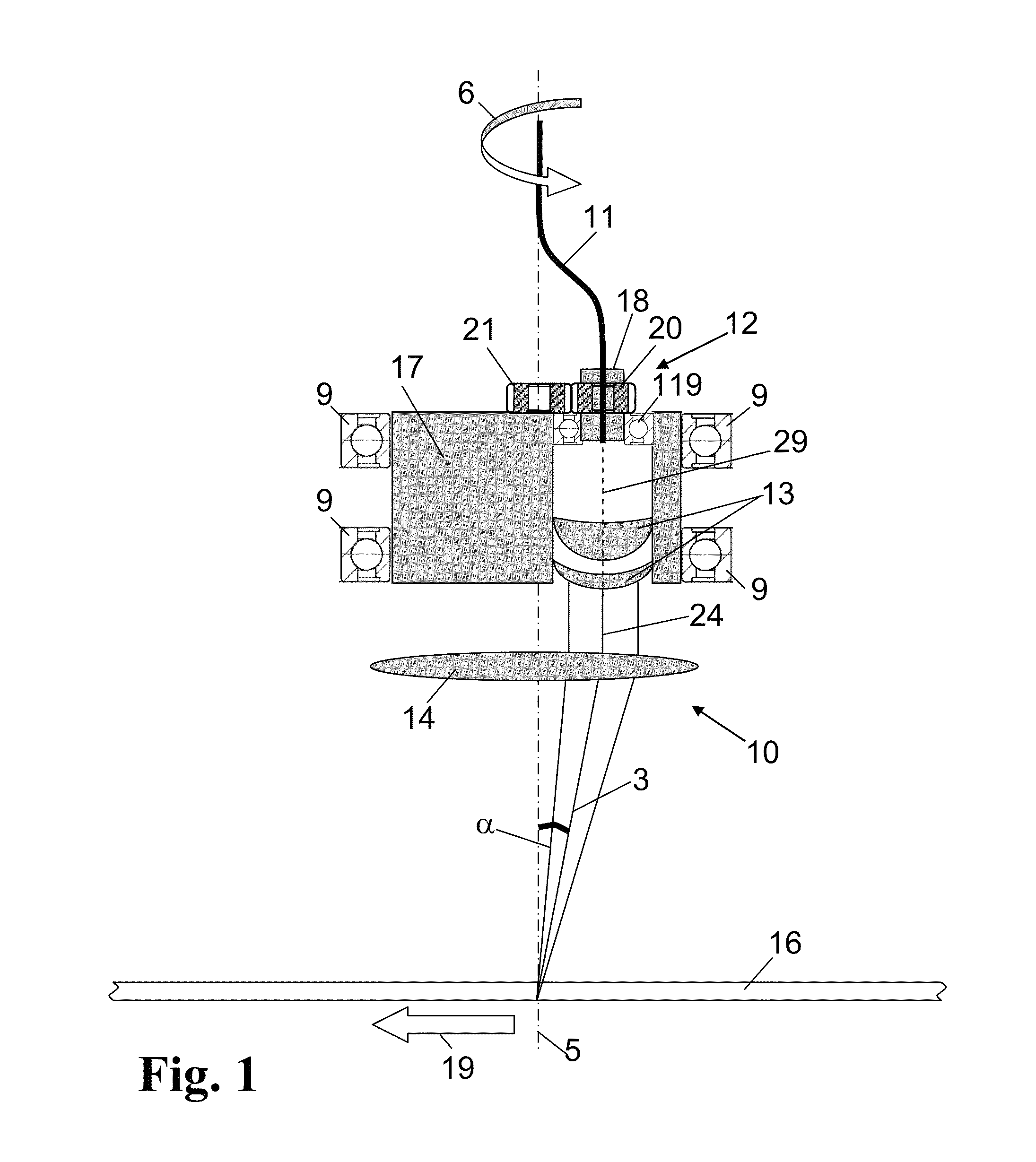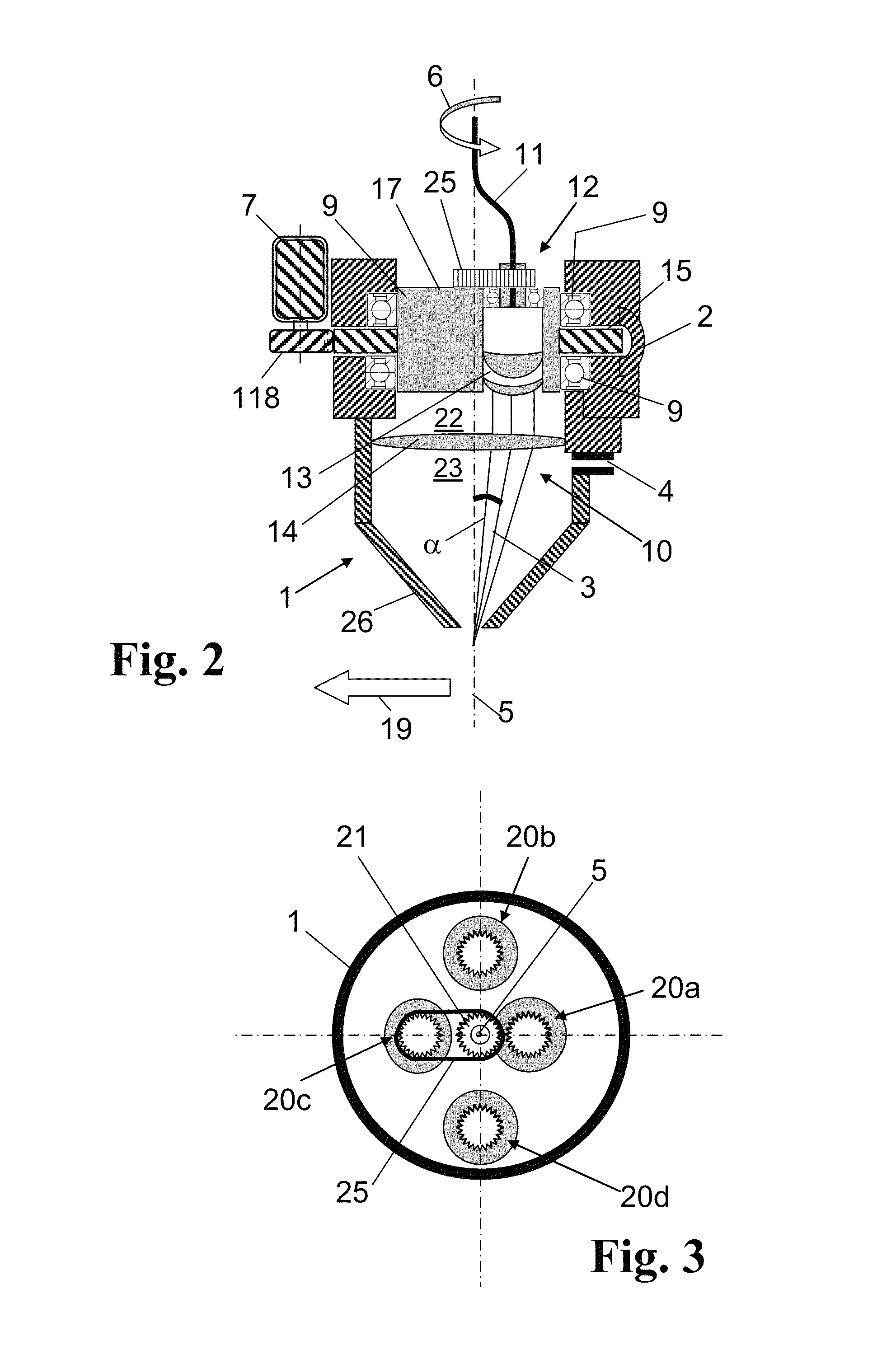Method and apparatus for the thermal treatment of a workpiece by means of a laser beam
a technology of laser beam and thermal treatment, which is applied in the direction of laser beam welding apparatus, belt/chain/gearing, toothed gearing, etc., can solve the problems of reducing the absorbed laser power, deteriorating process efficiency, and not being freely adjustable, so as to increase the maintenance requirements of the apparatus, material and design adjustment.
- Summary
- Abstract
- Description
- Claims
- Application Information
AI Technical Summary
Benefits of technology
Problems solved by technology
Method used
Image
Examples
embodiment
[0066]The invention will now be explained in more detail with reference to embodiments and a drawing. Schematically shown is in detail in:
[0067]FIG. 1 a first embodiment of an optical system for guiding and forming a laser beam for use in a laser head according to the invention in a side view (without housing of the laser head);
[0068]FIG. 2 the optical system of FIG. 1 with laser head housing;
[0069]FIG. 3 the laser head of FIG. 1 in a top view from above;
[0070]FIG. 4 a second embodiment of an optical system for guiding and forming a laser beam for use in a laser head according to the invention in a side view (without laser head);
[0071]FIG. 5 the optical system of FIG. 4 with laser head housing; and
[0072]FIG. 6 the system for guiding and forming the laser beam of FIG. 4 in a top view.
[0073]FIG. 2 shows a laser head 1 with a housing 2 and a nozzle 26 through which a cutting gas and a laser beam 3 exit, the laser beam 3 being inclined and focused relative to the vertical. The housing 2...
PUM
| Property | Measurement | Unit |
|---|---|---|
| tilt angle | aaaaa | aaaaa |
| bevel angle | aaaaa | aaaaa |
| angle | aaaaa | aaaaa |
Abstract
Description
Claims
Application Information
 Login to View More
Login to View More - R&D
- Intellectual Property
- Life Sciences
- Materials
- Tech Scout
- Unparalleled Data Quality
- Higher Quality Content
- 60% Fewer Hallucinations
Browse by: Latest US Patents, China's latest patents, Technical Efficacy Thesaurus, Application Domain, Technology Topic, Popular Technical Reports.
© 2025 PatSnap. All rights reserved.Legal|Privacy policy|Modern Slavery Act Transparency Statement|Sitemap|About US| Contact US: help@patsnap.com



